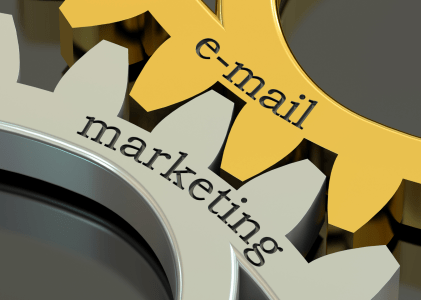
Many GenX entrepreneurs trying to succeed online struggle because they miss one very important step – building and catering to a list of dedicated subscribers.
You may have heard the saying, “The money’s in the list,” and this is a fact you shouldn’t ignore.
What most get hung up on is that they start out with no list. Over and over again, they complain because they have no subscribers, when what they should be doing is working on that list building task so that it snowballs into something formidable.
It might seem like a lot of effort the first week you set your list up and only see one or two subscribers join, but before you know it, you have 500 and then 1,000 loyal consumers opening every email you send their way.
You have to start somewhere, and if you stick with it, you’ll be able to turn that effort you gave into a fantastic monetization tool that helps support your business, while at the same time supporting your customers with what they need, too.
The Right Time and Place to Build Your Email List
The best time to start building your list is right now. The second you get started online, you should make list building a priority. Never delay this important task. Many people mistakenly believe they need to wait until they become successful to list build.
But list building is part of the formula that helps make you a success online. Don’t worry about being able to brag about your success to your followers. You’re not there to do that.
Your list is being created to help your audience with their needs. So the sooner you start list building, the better. Don’t do what many have done and wait until after they launch a product and get affirmation that people will like what they do.
If you recruited affiliates for a product launch and they sent their subscribers to buy your product, you want to capture those names and email addresses so that you can contact them in the future with helpful tips and other offers.
Where do you begin building a list?
Well, one way to do it, as mentioned above, is to launch something of your own and have affiliates send their list to it for a commission. Then the system on the platform you’re using (such as Warrior Plus), sends them a confirmation email so they can decide if they want to subscribe.
But another good way to build your list is by creating a freebie offer, such as a report or tip email series, and a landing page that you send people to that highlights what’s in the offer.
You can have this opt-in form for the freebie on your blog. Blogging consistently, using relevant keywords in your niche plus ensuring google has indexed your website, will bring traffic your way. Visitors will see the offer, and hop onto your list to get it and to see what else you can do to help them.
Choosing the Right Email Marketing Service
Many new online entrepreneurs get taken advantage of when it comes to buying tools and software to run their online business. If you are on a fixed income you will want to protect yourself and only invest in the best and most reliable tools.
There are always new tools being launched by fellow online marketers promising the world when it comes to email marketing. These tools often go defunct when the vendor stops supporting them.
Your best bet is to use one of the top three email marketing companies that have been around awhile and that will give you peace of mind. Aweber, GetResponse and MailChimp are three of the best tools to consider.
You want to be using an email marketing service that allows your business to grow without a steep cost. Preferably, they will have multiple tiered service plans.
This way, when you’re just starting out, you will pay much less than when your list grows substantially and you have the income and ability to pay a bit more. For example, Aweber has pricing tiers for those with under 500 subscribers, from 501-2,500, from 2,501-5,000 and so on.
You can pay monthly, quarterly or annually, and you have money if you pay for more upfront. Some companies, like MailChimp, have free options for anyone with under 2,000 subscribers, and then they have a variety of tiers (essentials, standard and premium) that all have different features available and subscriber limits.
GetResponse has Basic, Plus and Professional. These are monthly fees and you can purchase more add-on features if you want to for things like webinars and multi-user access.
Never buy more than you need at first. You can always upgrade whenever the demand is sufficient where you need to level up to something that offers more for your online business, so you don’t want to purchase based on future expectations.
Being new to email marketing, you want to go with a company that has extensive help and customer service as you’re learning the ropes. Aweber has a free academy that teaches you all of the ins and outs of their system.
But they also have a live chat feature on their site, so if you’re ever confused or need help, you can click the button and talk to a representative right away. You want to make sure that whatever company you go with, they have exceptional customer service.
Understanding Broadcast Vs Follow Up Emails
Once you have your free gift and email marketing account set up, you can start sending out messages to your subscribers. You want to be thinking of how to do this even before anyone opts in to your list.
There are a couple of different methods for emailing out. One is a follow-up email. A follow-up email (email campaign) is delivered to subscribers when they sign up, and continually drips out on the days you’ve set it for.
For example, follow-up email #1 goes out the day they sign up. Follow-up email #2 can go out the next day or another day, such as three days later if you want. It drips on a schedule that you decide.
Every subscriber will get these follow-up emails. So even if you create emails 1-10 in September of this year, anyone who signs up in March three years later will also get these emails dripped out to them.
Therefore, the follow-up emails need to be evergreen in nature. You don’t want outdated topics being dripped out to your subscribers. Don’t talk about current events. These should be based on helpful tips.
So a good example would be a dripped email follow-up series called 14 Diet Tips for Diabetics. Maybe you schedule one per day for the two-week series. Or, you could buy PLR or create emails to queue up every day or the year, every other day or one or two times per week.
You’ll learn what works best for your subscribers in your niche. Then you can tweak the schedule. Keep in mind that everyone will have a different opinion about how much is too much or too little when it comes to email frequency.
Some people have a reaction when you email twice a week, while others will send out a search mission if you go missing for more than one day in their email inbox. You’ll never satisfy everyone.
The other type of email you can send out is a broadcast email. These are one and done emails that future subscribers will not see when they sign up. So if you create a great email that goes out on September 1st, anyone who signs up on September 2nd will miss it. Aweber can put all your broadcasts for any list into an email digest “Newsletter Hub” for you to share with new subscribers if you choose to.
Broadcast emails are great for timely topics where they may not be evergreen. It might discuss current events or a technology or strategy that won’t be viable two years down the road.
Technically, you can use a mix of follow up and broadcast emails. But sometimes, this means your new subscriber will get two emails from you in one day. They’ll get the scheduled follow up, plus whatever broadcast email you send out.
The 3 Types of Emails You Should Send to Subscribers
One of the big worries for many new email marketers is that they won’t know what to say to their subscribers. They get a bit of stage fright, even though it’s all virtual and not a live event.
There’s nothing to be worried about when it comes to email marketing. You can start with three basic fundamental email types. The first is a strategy where you send out value emails.
Value emails are what your subscriber signed up for. They want you to share tips and advice to make their life better or easier. Whether it’s learning how to lose weight or shave three points off their short game in golf, your insight is why they’re here.
Sometimes you might stall out, thinking everyone knows a simple tip already. But you don’t know what everyone else knows, and for newbies in your niche, this can be very helpful.
Even if you worry that it’s information they can find on the Internet elsewhere, go ahead and share your tips. They came to you, not another person’s blog, so they’re expecting you to lead them.
The second type of email you want to send out is one where you share free gifts and good will. There should be perks for being your subscriber. Yes, insight is one – but going above and beyond is what sets you apart and makes them want to spend money with you whenever you have something for sale or are promoting someone else’s product.
You’ll be giving your subscriber one freebie when they sign up. But unexpected freebies are the ones they are pleasantly surprised by. You can also give them perks like advanced access to something, private webinars with you, and discount coupons for your products or for someone else’s that you arranged for them.
The third type of email you want to master sending out is a promotion email. If the money’s in the list, then you want it to be profitable for you. That means you can promote your products whenever they’re launched.
You can also make recommendations for other peoples’ products as an affiliate, where you earn a commission from every sale. This is something many senior marketers find daunting or spammy, but your subscribers will appreciate you guiding them on purchases so they don’t waste their money elsewhere.
Make Your Emails Stand Out
The consumers who sign up to your email list may be signed up to many other marketers’ lists. So instead of your messages getting deleted, unopened, or sent to the spam filter, you want to make sure the subscriber can’t wait to open your messages when they arrive.
The first thing you want to do is to make sure you’re being consistent with your message delivery. Emailing randomly whenever you feel you have something to say as opposed to on a frequent schedule can sometimes cause subscribers to forget who you are or why you’re contacting them.
Some will get angry, assuming you’re spamming them because they have forgotten that they signed up with you. Consistency is key to enabling people to be on the lookout for your emails in their inbox.
Another thing you want to do is to personalize your emails. It should never be all business, all of the time. Many corporations have newsletters and people just don’t feel that loyal bond to them as they do with some online marketing entrepreneurs.
Weave personal stories throughout your emails and start or finish your emails with a personal note so they can get to know you better. Of course, you always want to be careful with your information.
But you can share simple things about what you did last weekend or what you’re planting in your garden this Spring without it putting you at risk. These little details help your subscriber gain familiarity with you.
They befriend you in some way. This is helpful because it’s how trust is built and how loyal consumers make purchasing decisions whenever it comes down to them buying through your link versus one of your competitors.
Third, remember that email marketing should never be a one-way event. Subscribers are letting you into their email inbox. So if they reply to you, with a request for advice or direction, take time to respond.
This doesn’t mean you have to become a free marketing coach available 24/7. But being courteous enough to answer them when they take time to reach out is important to helping you stand out.
Email marketing seems like a daunting task for your business, but when you boil it down, it’s nothing more than sending out great advice to people you want to treat as your friends. It’s easy. It can be fun. And it will serve you well financially.

